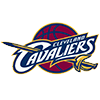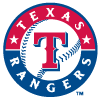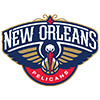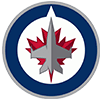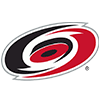This article will identify five best ball running back sleeper picks whose hype is perhaps misguided. The 'sleeper' term in this case meaning running backs selected 120.0 or later in the ADP, and more specifically focusing on running back prospects who have not broken out previously.
The players are listed by order of Underdog ADP. These players are on this list for different reasons case by case – a running back might be a false sleeper simply because they lack the traits necessary for production, or they might be an otherwise potentially productive player who ends up on the list due to some other complication.
Rico Dowdle, DAL (141.5 ADP)
Dowdle is an easy call. He's the most expensive player on this list and he's also likely the least capable from scrimmage. There is an increasing momentum in fantasy media to suggest Dowdle is better than Ezekiel Elliott, and such fanfiction makes Dowdle's price increasingly poisonous.
Dowdle may very well be the RB2 in Dallas behind Elliott, but (A) the emerging market increasingly rejects this concession anyway and (B) Dowdle ranking behind Elliott is not the same as Dowdle fully replacing Elliott in the event that Elliott were to miss time. In other words, if Elliott were to miss time then Dowdle's workload would not necessarily increase. More likely is that if Elliott is out, Dowdle would split the from-scrimmage workload with teammates who can do things that he cannot. Royce Freeman and Hunter Luepke are both more powerful and more capable receivers than Dowdle, and Dowdle doesn't offer enough speed to stand out from Freeman or Luepke on the basis of big plays. There's nothing Dowdle offers that others can't imitate or exceed.
The key point here is that Dowdle likely can't do much, and whatever little he's capable of he can't do over substantial volume. Career backups are career backups because they can't face the exposure of a starting role without their performance declining as the specific result of that increased exposure. The less talent a player has, the more they push their luck as their usage increases.
Let's assume the Dallas coaches sincerely value Dowdle and the contributions he's made to this point. What's the most that has been asked of Dowdle? Dowdle played 276 special teams snaps in three years, and Dallas presumably was happy with his work there. What about the 252 offensive snaps?
Dowdle's two best NFL games were in the 2023 season -- Week 10 against the Giants (22 snaps) and Week 18 against Washington (25 snaps). Dowdle did quite well between the two games, producing 125 yards and one touchdown on 21 carries (6.0 YPC) while adding three receptions for 54 yards on four targets. The Cowboys won those games by a combined 87-27. Dowdle was asked to produce in two blowouts against two of the NFL's worst defenses and he did. Can he do more than that? The evidence says "No!"
Outside of those games agains the Giants and Commanders (47 snaps), Dowdle has logged 205 offensive snaps in the NFL. Those snaps yielded 260 yards rushing on 74 carries (3.5 YPC) along with 14 receptions for 90 yards and two touchdowns on 18 targets (77.8 percent catch rate, 5.0 YPT). That's poor production even by backup standards. As much as 205 snaps is too small of a sample to completely write off a player, the problem in Dowdle's case is that the red flags are corroborated by his collegiate career.
If you look to Dowdle's South Carolina career you'll only find more concerning details. Dowdle struggled with injuries, fumbles and drops throughout his four collegiate seasons, which is why he could never establish himself as the clear starter over non-prospects like Ty'Son Williams, A.J. Turner and Mon Denson. In Dowdle's senior season he was mostly benched for Clemson transfer Tavien Feaster, who never logged a carry in the NFL but roundly outplayed Dowdle while they were teammates. In addition to these general red flags, there exists in Dowdle's collegiate profile the same theme as his NFL production in that there is an almost complete void of quality starts – Dowdle would beat up on overmatched opponents and then completely disappear against competent ones. Outside of his career-best game against Western Carolina during his freshman season (226 yards and two touchdowns on 21 carries), Dowdle finished his South Carolina career with 1,941 rushing yards and 14 touchdowns on 407 carries, which equals a meager 4.77 yards per carry. Basura.
Perhaps Elliott is some version of disappointing, and perhaps Dowdle really will be the first backup to Elliott. It still doesn't matter. If it's not Elliott claiming a starting role in the Dallas backfield then Dallas will implement a committee or add someone who isn't currently on the roster. If Dowdle is forced to start he will quickly prove a liability and the experiment will end.
Better options: Almost anyone
MarShawn Lloyd, GB (144.0 ADP)
Lloyd is a definite threat from scrimmage, and his combination of anchor (5-foot-9, 220 pounds) and speed (4.46-second 40) gives him the ability to both break tackles and run away from defenders. In the event that Josh Jacobs were to miss time there's a chance Lloyd would become the lead back for the Packers. The problem for me is that this ADP supposes that Lloyd would definitely start if Jacobs were to miss time, and some of the people drafting Lloyd even believe he'll force some timeshare with Jacobs. Weirder things have happened, but not many.
Even handcuff logic is probably a mistake in Lloyd's case. There's no hard evidence that he will play ahead of AJ Dillon, whose ADP is way back at 215.5. Dillon was a disappointment last year but was mostly solid before then, and Dillon was a better prospect as a second-round pick than Lloyd is as a late third-round pick. There isn't even slam-dunk evidence that Lloyd is better than Emanuel Wilson, who has quietly excelled whenever given opportunity.
You know why Lloyd is a bad bet to start even if Jacobs misses time? It's easy: Lloyd fumbled 11 times on just 325 touches in college. Jacobs incurred 393 touches from scrimmage in 2022. If Lloyd's fumble rate were applied to that workload it would yield 13 fumbles!
Better options: Kendre Miller, Jaylen Wright, Ty Chandler, Ray Davis, Tyler Allgeier, Antonio Gibson, J.K. Dobbins, Chuba Hubbard, Elijah Mitchell, AJ Dillon
Kimani Vidal, LAC (158.9 ADP)
This one stings, because I'm actually a huge fan of Vidal and have no doubt he's at least an average starting NFL running back. In a way I'm lying by referring to Vidal as a False Sleeper here – if he gets the opportunity to play then I have no fear in predicting he'll be productive. The price is the only complaint here. Vidal will produce if given the opportunity, but this price tag supposes a higher level of opportunity than we have reason to project for Vidal's rookie season as a sixth-round pick out of Troy.
Vidal should have gone no later than the fourth round and is clearly much better than a number of Day 2 running back picks in any given year, but because Vidal fell to the sixth there won't be as much pressure for Chargers coaches to implement him in the game plan. Indeed, Vidal needs to first worry about dispatching fourth-round bust Isaiah Spiller before we can so much as assume Vidal will be on the gameday 45-man roster. Even if Vidal is active on game days, though, he would be a clear RB3 behind Gus Edwards and J.K. Dobbins.
It's certainly true that Edwards and especially Dobbins have major durability concerns, and with that it's easy enough to imagine the scenario where Vidal gets his foot in the door. The question in the meantime is this: Is there objectively more risk that Dobbins misses time than there is that Vidal gets slow-rolled as a late Day 3 draft pick? If Dobbins is healthy then he's more talented than Vidal, substantial as Vidal's own talent might be. This is no insult against Vidal, because I think Dobbins is one of the 10 most talented running backs in the NFL. But believing that as I do, I can't in good conscience advise anyone to draft Vidal at 158.9 over Dobbins at 174.0 ADP.
Better options: J.K. Dobbins
Jaleel McLaughlin, DEN (167.9 ADP)
The good news with McLaughlin is that he's clearly a formidable threat from scrimmage on a given play. McLaughlin provided consistently productive reps to the Broncos over his 184 snaps on offense, and he was one of the most productive players in FCS history at Youngstown State during his collegiate career. McLaughlin has only succeeded to this point, and with that there's sound reason to believe McLaughlin's skill set as a running back is substantial.
The problem with McLaughlin as a best ball selection is that he lacks the physical traits for his per-snap production to scale up very much. Other running backs in his range of the ADP could become three-down starters if the starters ahead of them miss time, whereas in McLaughlin's case little or no such possibility exists due to snap volume limitations. Per-snap production is great, but without the actual snaps the value is only theoretical. For the value to be practical we need McLaughlin to not only push aside major competition for snaps, but we need him to do so by accomplishing feats that we don't have have reason to expect from him. McLaughlin more specifically looks like an excellent role-playing running back, thriving on in-space designs like draws, tosses, sweeps and screen passes. An NFL offense only runs a finite number of such play designs, though, and to budget a full game of play calls you'll need to eventually call for a play design where McLaughlin is less likely to thrive – namely, power functions and blitz pickup. Power functions and blitz pickup are both strengths of Javonte Williams, Samaje Perine and Audric Estime.
Even if Williams, Perine and Estime weren't threats to limit McLaughlin's snap count, McLaughlin likely lacks the frame to hold up with a full workload, anyway, in the same way it would be true to say about fellow sub-190 running backs like De'Von Achane and Keaton Mitchell. At 5-foot-8, 187 pounds McLaughlin would risk injury if you give him more than 10 carries or 30 snaps in a game. McLaughlin's collegiate production was elite because of his elite per-touch efficiency, and similarly we have reason to think McLaughlin will be dependent on extremely high per-touch efficiency to provide fantasy utility. Unlike Achane and Mitchell, though, McLaughlin lacks long-range speed (4.46-second pro day 40 at 192 pounds). You can safely expect guys like Achane and Mitchell to average 6.0 yards per carry or more with a high touchdown frequency, but in a mediocre Denver offense it's unlikely that McLaughlin can conjure similar explosives.
McLaughlin likely will be very efficient on a per-touch basis, and so there likely will be some amount of fantasy utility there. At this particular price, though, the investment can't yield much in the way of profit. At 167.9 in the ADP the average landing spot for McLaughlin is in the 13th round, which places him ahead of players like J.K. Dobbins (174.0 ADP), Chuba Hubbard (174.2 ADP), Elijah Mitchell (200.8 ADP), Isaac Guerendo (213.6 ADP) and Evan Hull (214.7 ADP). Each player's workload upside is much greater than McLaughlin's, and all but probably Mitchell and Guerendo offer higher floors. McLaughlin would be easier to justify if he were going a bit later in the ADP, like closer to the 18th round.
Better options: Chuba Hubbard, J.K. Dobbins, Evan Hull
Bucky Irving, TB (174.6 ADP)
Irving was one of the most disappointing players at the 2024 NFL Combine, which was such a bummer given that Irving's tape and production at Oregon and Minnesota were excellent otherwise. With production like Irving's we have reason to believe his skill set grade is at least average and likely more, but when the tools grade is this bad you have to worry that the player's strong skill set is negated by their substandard athleticism.
Irving knows how to evade people who are chasing him. He did it all the time in college, where he produced 2,937 yards and 20 touchdowns rushing (6.2 YPC) and catching 95 receptions for 785 yards and three touchdowns. Simply knowing how isn't enough at the NFL level, though – you need the physical tools to apply that knowledge or else you're just in over your head. At 5-foot-9, 192 pounds, Irving's 4.55-second 40-yard dash, 29.5-inch vertical and 115-inch broad jump were all brutal figures, especially the jumps. The 4.55 is technically average, but when your weight is in the bottom 10th percentile then it's far short of adequate.
An insightful worst-case example of a high-skill, no-tools running back would be Myles Gaskin. Gaskin was a high-volume, high-efficiency workhorse for four years at Washington – even better than what Irving did at Oregon – and with that Gaskin demonstrated an adequate or better skill set grade. Gaskin's athletic testing was poor, on the other hand, logging a 4.58-second 40-yard dash at 5-foot-9, 205 pounds. Gaskin's workout was likely better than Irving's given Gaskin's superior jumps (35.5-inch vertical, 118-inch broad jump), yet Gaskin was unceremoniously tossed aside by the league anyway. There isn't even an obvious case for why Irving would be better than Sean Tucker, let alone Chase Edmonds. Irving will not be stealing work from Rachaad White, aside from maybe a draw here or there.
Better options: Evan Hull, Elijah Mitchell, Isaac Guerendo, Chris Rodriguez, Khalil Herbert, Tyrone Tracy, Clyde Edwards-Helaire, AJ Dillon, Justice Hill, Kenneth Gainwell








